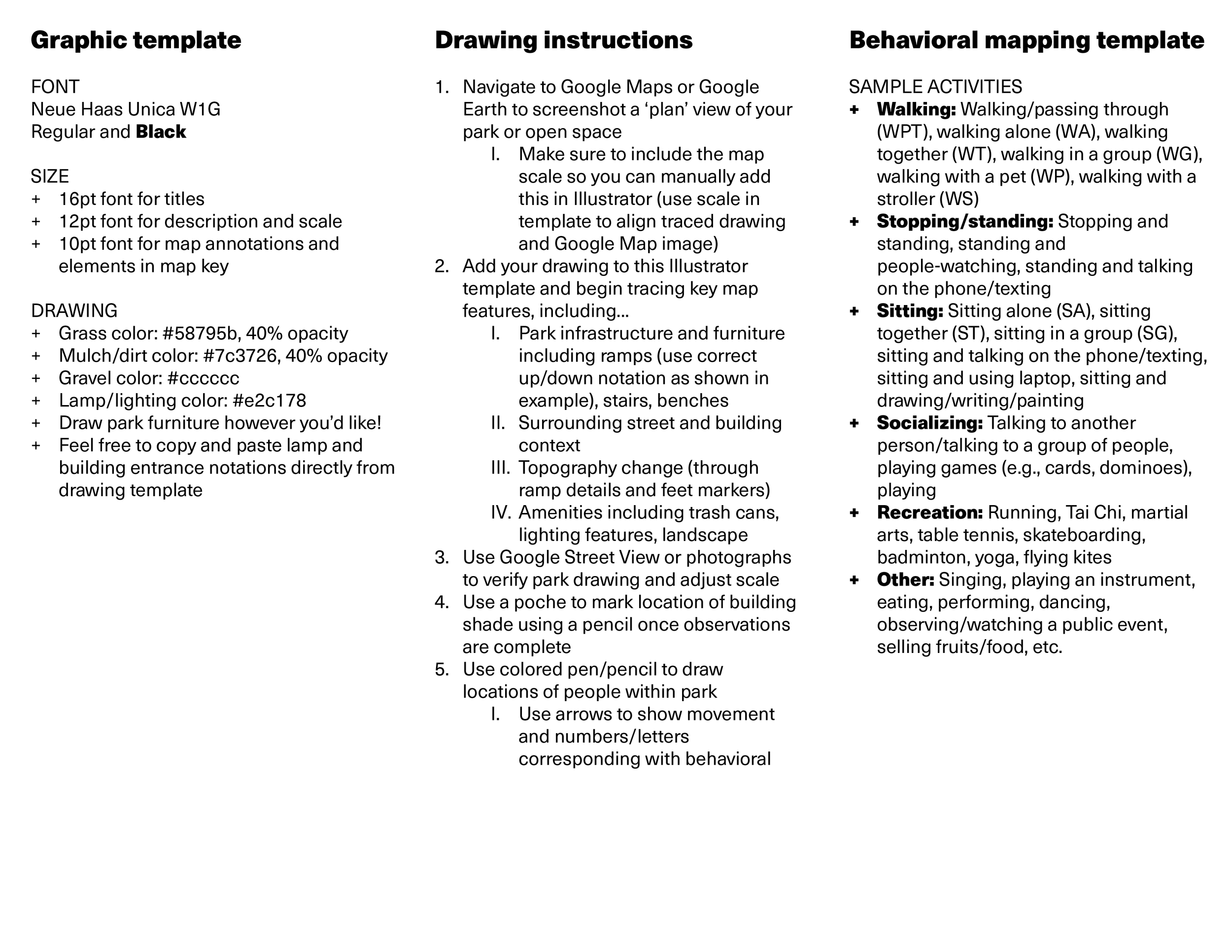Chinatown Open Space/Land Use Research (2023)
As a research assistant to Lily Song, Assistant Professor of Race and Social Justice in the Built Environment at Northeastern University, I developed a number of visual materials for Lily’s graduate anti-displacement research studio. These included behavioral mapping templates for seven key open spaces in Boston’s Chinatown, where the team partnered with Asian Community Development Corporation, Castle Square Tenants Association and the Pao Arts Center to research the history and community activism behind Chinatown open spaces and understand which elements of each open space attracted residents to the space. I additionally led the class through a land use mapping exercise where we studied various zoning maps surrounding each open space; this allowed students to better understand from where park users might be accessing the park, at what times of day and for what purpose.
Additionally, Lily and I worked with Professor Matthew Lee, Teaching Professor of Human Services at Northeastern University to create visual materials to accompany a survey of Chinatown residents and open space users. The survey intends to capture more granular information about open space users, understanding their general routes to the space, their reasons for visiting the space and what they would like to see improved or changed in the open space. In the coming months, our team will begin collaboration with a local design team to implement improved park amenities that better respond to user needs and desires.
Please visit the link here to view all of the student work from the anti-displacement studio!




